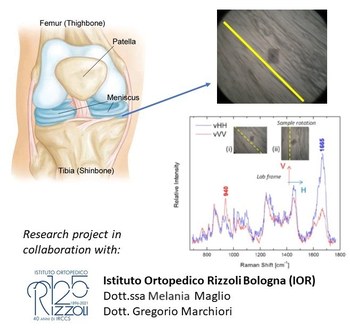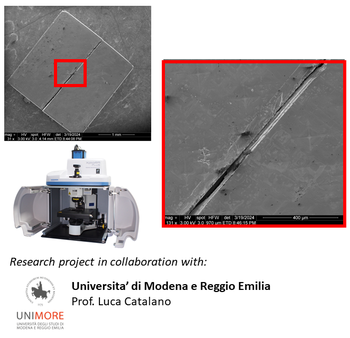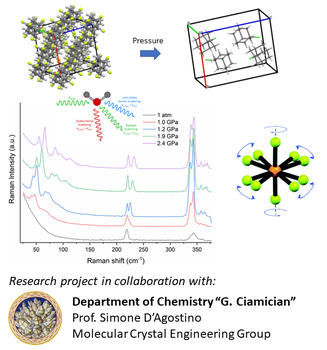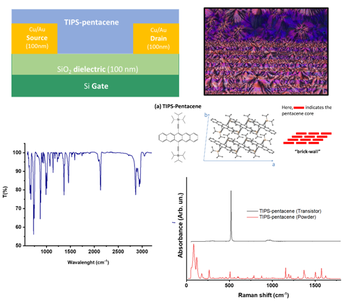Thesis projects

Meniscus degeneration diagnosis by Confocal Polarized Micro-Raman Spectroscopy
The purpose of the present study is to analyze normal and degenerated menisci with Raman methodology on thin sections of formalin fixed paraffin embedding tissues and to correlate the Raman findings with the grade of meniscus degeneration.
Following routine histopathological analysis to determine the grade of meniscal lesions obtained from healthy and degenerated formaline fixed paraffin embedded (FFPE) meniscal sections, Raman polarization approach will be applied to evaluate the orientation of collagen fibrils in different levels by means of confocal setup of the same 5 μm thick FFPE meniscal tissue sections, used for histopathological assessment. The spectroscopic data will be compared with Micro-CT imaging form IOR collaborators.

Study of the Self-healing process in hybrid perovskites for optoelectronic applications
Hybrid halide perovskites are materials with renewed interests in the last few years for its potential application in thin film solar cells with performances comparable with those of established thin film photovoltaic cells. One of the major issues of these materials are the chemical and photostability.
Recently it has been suggested the possibility of “self-healing” (self-repair) of the hybrid perovskites which refers to the ability of a material to return to its original state after being damaged by external influence such as exposure to degrading chemical, temperature, light or mechanical stress.
In this project we will focus on the study if the ability of self-repair after a mechanical stress. For this study we will use Raman spectroscopy to probe the lattice dynamics during the self-repair process. Indeed, perovskites, while crystalline, they also show significant bond anharmonicity leading to dynamic disorder within the well-defined crystalline lattice which reflect on the lattice phonons structure.

Plastic crystals for solid state ion conductors in fuel cells and batteries
Lately, Plastic Crystals (PCs) are receiving increased interest thanks to their unique physical and chemical properties and possible applications such as fuel cells and batteries. The ions or the molecules of the PCs display a short-range disorder commonly derived from re-orientational motions around their center of mass, which has long-range order. This behavior is mainly observed in the chemical species with spherical, cylindrical, and disc-like shapes, i.e., crown ethers. The plastic phase can be obtained via one or more solid-solid phase transitions.
PCs have a great potential to be used in fuel cells and batteries as a solid-state electrolyte since the dynamic motions may affect the mobility of ions through the crystal. The ionic conductivity of these compounds by applying electrochemical impedance spectroscopy is influenced by the plastic phase transition. XRD and THz (or low-frequency) Raman spectroscopy are used to gain insight into the effect of different cations on the plastic phase transition and ion conductivity.

Polymorphism in organic field effect transistors (OFETs)
Organic semiconductors (OSCs) are a class of functional materials with a wide range of physical and chemical properties. Their excellent versatility in terms of synthesis and processing led to the development of organic devices such as organic light-emitting diodes (OLEDs), photovoltaic cells (OPVs), and organic field-effect transistors (OFETs).
A common phenomena in organic semicnondutors is the appearance of different crystal packings depending on the experimental conditions for the deposition of the thin films, also knows as polymorphism. The use of low-frequency vibrational spectroscopy, or Terahertz (THz), is of fundamental importante in the polymorph discrimination and mapping in real devices.